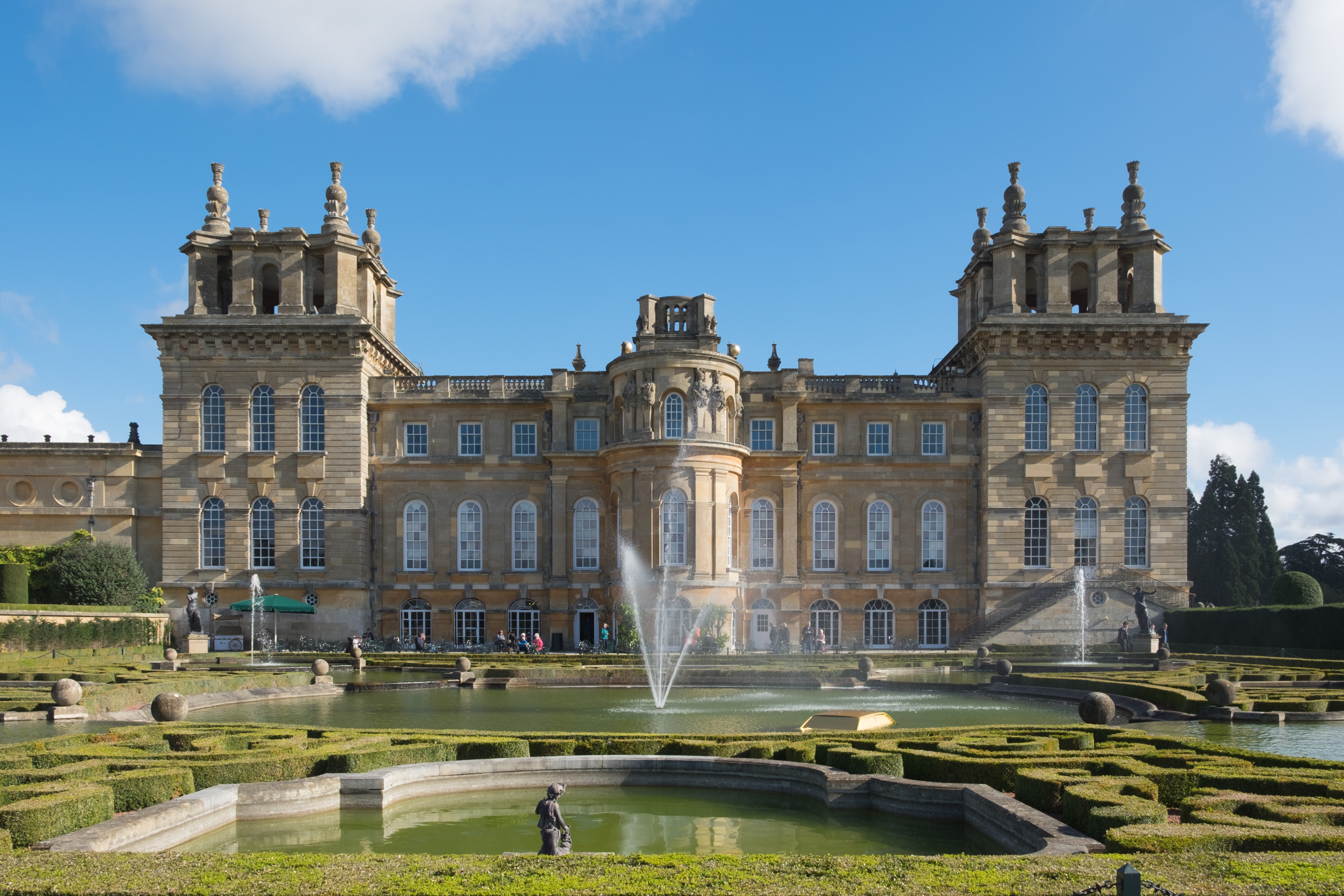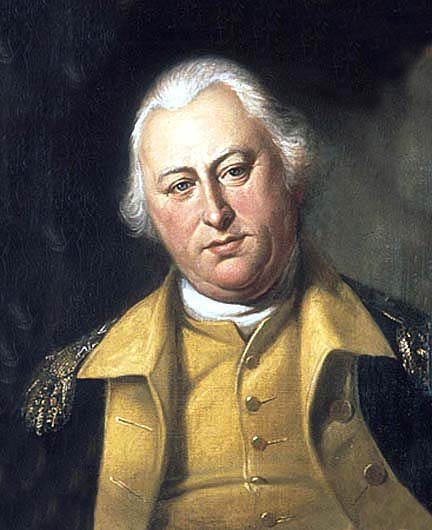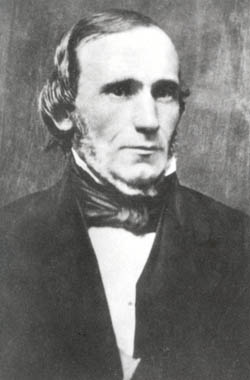|
Proctor-Clement House
The Proctor-Clement House is a historic house at 85 Field Avenue in Rutland (city), Vermont, Rutland, Vermont. It was built in 1867 for Redfield Proctor, a prominent local lawyer and businessman who came to own the Vermont Marble Company and served as Governor of Vermont. A fine example of Italianate architecture, it now houses the Antique Mansion Bed and Breakfast. It was listed on the National Register of Historic Places in 1982. Description and history The Proctor-Clement House is located in a residential area near the northern city limit of Rutland, opposite the Rutland Country Club at the junction of Field Avenue and Grove Street. It is a roughly square two-story wood-frame structure, with clapboard siding and a shallow hip roof topped by a square belvedere (structure), belvedere. The building corners are pilastered, and the eaves are studded with paired Italianate brackets. The main entrance is sheltered by a shallow portico with bracketed chamfered posts. The interio ... [...More Info...] [...Related Items...] OR: [Wikipedia] [Google] [Baidu] |
Rutland (city), Vermont
The city of Rutland is the seat of Rutland County, Vermont, United States. As of the 2020 census, the city had a total population of 15,807. It is located approximately north of the Massachusetts state line, west of New Hampshire state line, and east of the New York state line. Rutland is the third largest city in the state of Vermont after Burlington and South Burlington. It is surrounded by the town of Rutland, which is a separate municipality. The downtown area of the city is listed as a historic district on the National Register of Historic Places. History The town of Rutland was chartered in 1761 and named after John Manners, 3rd Duke of Rutland. It was settled in 1770 and served as one of the capitals of the Republic of Vermont. In the early 19th century, small high-quality marble deposits were discovered in Rutland, and in the 1830s a large deposit of nearly solid marble was found in what is now West Rutland. By the 1840s, small firms had begun excavations, but ... [...More Info...] [...Related Items...] OR: [Wikipedia] [Google] [Baidu] |
Redfield Proctor
Redfield Proctor (June 1, 1831March 4, 1908) was a U.S. politician of the Republican Party. He served as the 37th governor of Vermont from 1878 to 1880, as Secretary of War from 1889 to 1891, and as a United States Senator for Vermont from 1891 to 1908. Biography Redfield Proctor was born on June 1, 1831. a native of Proctorsville, a village named after his family in the town of Cavendish in Windsor County, Vermont. His father, Jabez Proctor, was a farmer, merchant, and prominent local Whig politician. He was raised by his mother, Betsy Parker Proctor (1792–1871), from age 8 after the sudden death of his father. Proctor's first cousins on his mother's side included Isaac F. Redfield and Timothy P. Redfield, both justices of the Vermont Supreme Court. After graduating from Dartmouth College in 1851, Proctor returned to Proctorsville, where he became first a businessman, and later a lawyer. He earned his master's degree from Dartmouth College and graduated from Albany Law ... [...More Info...] [...Related Items...] OR: [Wikipedia] [Google] [Baidu] |
Vermont Marble Company
The Vermont Marble Museum or Vermont Marble Exhibit is a museum commemorating the contributions of Vermont marble and the Vermont Marble Company, located in Proctor, Vermont, United States. The museum is located in a wing of one of the former Vermont Marble Company buildings. Vermont Marble Company The Vermont Marble Company was founded in 1880 by businessman and politician Redfield Proctor, who served as the company's first president. Marble was quarried from several locations in the town of Proctor, then called Sutherland Falls, and the surrounding communities of Rutland, West Rutland and Danby. As railroads arrived in Rutland and Proctor, the Vermont Marble company became one of the largest producers of marble in the world. The company provided marble for the construction of such notable icons as the USS Arizona Memorial, the West Virginia State Capitol, the Oregon State Capitol, the United States Supreme Court Building, the Arlington National Cemetery, and Yale University's ... [...More Info...] [...Related Items...] OR: [Wikipedia] [Google] [Baidu] |
Governor Of Vermont
The governor of Vermont is the head of government of Vermont. The officeholder is elected in even-numbered years by direct voting for a term of 2 years. Vermont and bordering New Hampshire are the only states to hold gubernatorial elections every 2 years, instead of every 4 as in the other 48 U.S. states. There is no limit on the number of terms a Vermont Governor can serve. If no candidate receives at least 50% plus one vote of all votes for Governor cast in the election, the Governor of Vermont is then elected by the state legislature. Constitution of Vermont Chapter 2, Section 20. The incumbent Vermont Governor is Republican Phil Scott. He was sworn in on January 5, 2017, becoming Vermont's 82nd Governor. Function The Governor's working offices are located in The Pavilion in the state capital of Montpelier, Vermont. The Governor's ceremonial office, used during the legislative session of the General Assembly, is located in the Vermont State House, also in Montpelier. Th ... [...More Info...] [...Related Items...] OR: [Wikipedia] [Google] [Baidu] |
National Register Of Historic Places
The National Register of Historic Places (NRHP) is the United States federal government's official list of districts, sites, buildings, structures and objects deemed worthy of preservation for their historical significance or "great artistic value". A property listed in the National Register, or located within a National Register Historic District, may qualify for tax incentives derived from the total value of expenses incurred in preserving the property. The passage of the National Historic Preservation Act (NHPA) in 1966 established the National Register and the process for adding properties to it. Of the more than one and a half million properties on the National Register, 95,000 are listed individually. The remainder are contributing resources within historic districts. For most of its history, the National Register has been administered by the National Park Service (NPS), an agency within the U.S. Department of the Interior. Its goals are to help property owners a ... [...More Info...] [...Related Items...] OR: [Wikipedia] [Google] [Baidu] |
Belvedere (structure)
A belvedere or belvidere (from Italian for "beautiful view") is an architectural structure sited to take advantage of a fine or scenic view. The term has been used both for rooms in the upper part of a building or structures on the roof, or a separate pavilion in a garden or park. The actual structure can be of any form or style, including a turret, a cupola or an open gallery. The term may be also used for a paved terrace or just a place with a good viewpoint, but no actual building. It has also been used as a name for a whole building, as in the Belvedere, Vienna, a huge palace, or Belvedere Castle, a folly in Central Park in New York. Examples On the hillside above the Vatican Palace, (circa 1480-1490), Antonio del Pollaiuolo built a small pavilion (''casino'' in Italian) named the ''palazzetto'' or the Belvedere for Pope Innocent VIII Pope Innocent VIII ( la, Innocentius VIII; it, Innocenzo VIII; 1432 – 25 July 1492), born Giovanni Battista Cybo (or C ... [...More Info...] [...Related Items...] OR: [Wikipedia] [Google] [Baidu] |
Proctor, Vermont
Proctor is a town in Rutland County, Vermont, United States. The population was 1,763 at the 2020 census. Proctor is home to the Vermont Marble Museum and Wilson Castle. History In the early 19th century, small high-quality marble deposits were discovered in Rutland, and in the 1830s a large deposit of nearly solid marble of high quality was found in what is now West Rutland. By the 1840s small firms had begun operations, but marble quarries only became profitable when the railroad came to Rutland in 1851. At the same time, the famous quarries of Carrara in Tuscany, Italy, became largely unworkable because of their extreme depth, and Rutland quickly became one of the leading producers of marble in the world. This fueled enough growth and investment that in 1886 the marble companies saw to it that when the present Rutland City was incorporated as a village, most of the town was split off as West Rutland and Proctor, which between them contained the bulk of the marble quarrie ... [...More Info...] [...Related Items...] OR: [Wikipedia] [Google] [Baidu] |
West Rutland, Vermont
West Rutland is a town in Rutland County, Vermont, United States. The population was 2,214 at the 2020 census. The town center, located in the south-central portion of the town and where about 87% of the population resides, is defined by the U.S. Census Bureau as a census-designated place (CDP). The town is part of the Rutland micropolitan NECTA. Local culture West Rutland has many small businesses, many of which are found on Marble Street, the town's main street. Other businesses include Boardman Hill Farm (including its associated solar farm) and the Carving Studio & Sculpture Center. The town has a small public school, West Rutland School, that enrolls students from pre-kindergarten to 12th grade. It is part of the Quarry Valley Unified Union School District. History The town of Rutland was originally granted in 1761 as one of the New Hampshire Grants and named after Rutland, Massachusetts, the home of the first grantee, John Murrey. It was one of the most successful of ... [...More Info...] [...Related Items...] OR: [Wikipedia] [Google] [Baidu] |
United States Secretary Of War
The secretary of war was a member of the U.S. president's Cabinet, beginning with George Washington's administration. A similar position, called either "Secretary at War" or "Secretary of War", had been appointed to serve the Congress of the Confederation under the Articles of Confederation between 1781 and 1789. Benjamin Lincoln and later Henry Knox held the position. When Washington was inaugurated as the first President under the Constitution, he appointed Knox to continue serving as Secretary of War. The secretary of war was the head of the War Department. At first, he was responsible for all military affairs, including naval affairs. In 1798, the secretary of the Navy was created by statute, and the scope of responsibility for this office was reduced to the affairs of the United States Army. From 1886 onward, the secretary of war was in the line of succession to the presidency, after the vice president of the United States, the Speaker of the House of Representatives, t ... [...More Info...] [...Related Items...] OR: [Wikipedia] [Google] [Baidu] |
Benjamin Harrison
Benjamin Harrison (August 20, 1833March 13, 1901) was an American lawyer and politician who served as the 23rd president of the United States from 1889 to 1893. He was a member of the Harrison family of Virginia–a grandson of the ninth president, William Henry Harrison, and a great-grandson of Benjamin Harrison V, a founding father. Harrison was born on a farm by the Ohio River and graduated from Miami University in Oxford, Ohio. After moving to Indianapolis, he established himself as a prominent local attorney, Presbyterian church leader, and politician in Indiana. During the American Civil War, he served in the Union Army as a colonel, and was confirmed by the U.S. Senate as a brevet brigadier general of volunteers in 1865. Harrison unsuccessfully ran for governor of Indiana in 1876. The Indiana General Assembly elected Harrison to a six-year term in the Senate, where he served from 1881 to 1887. A Republican, Harrison was elected to the presidency in 1888, d ... [...More Info...] [...Related Items...] OR: [Wikipedia] [Google] [Baidu] |
National Register Of Historic Places Listings In Rutland County, Vermont
__NOTOC__ This is a list of the National Register of Historic Places listings in Rutland County, Vermont. This is intended to be a complete list of the properties and districts on the National Register of Historic Places in Rutland County, Vermont, United States. Latitude and longitude coordinates are provided for many National Register properties and districts; these locations may be seen together in a map. There are 76 properties and districts listed on the National Register in the county, one of which is also a National Historic Landmark. Current listings See also * List of National Historic Landmarks in Vermont * National Register of Historic Places listings in Vermont References {{Rutland County, Vermont Rutland Rutland () is a ceremonial county and unitary authority in the East Midlands, England. The county is bounded to the west and north by Leicestershire, to the northeas ... [...More Info...] [...Related Items...] OR: [Wikipedia] [Google] [Baidu] |
Houses On The National Register Of Historic Places In Vermont
A house is a single-unit residential building. It may range in complexity from a rudimentary hut to a complex structure of wood, masonry, concrete or other material, outfitted with plumbing, electrical, and heating, ventilation, and air conditioning systems.Schoenauer, Norbert (2000). ''6,000 Years of Housing'' (rev. ed.) (New York: W.W. Norton & Company). Houses use a range of different roofing systems to keep precipitation such as rain from getting into the dwelling space. Houses may have doors or locks to secure the dwelling space and protect its inhabitants and contents from burglars or other trespassers. Most conventional modern houses in Western cultures will contain one or more bedrooms and bathrooms, a kitchen or cooking area, and a living room. A house may have a separate dining room, or the eating area may be integrated into another room. Some large houses in North America have a recreation room. In traditional agriculture-oriented societies, domestic animals such as ... [...More Info...] [...Related Items...] OR: [Wikipedia] [Google] [Baidu] |







